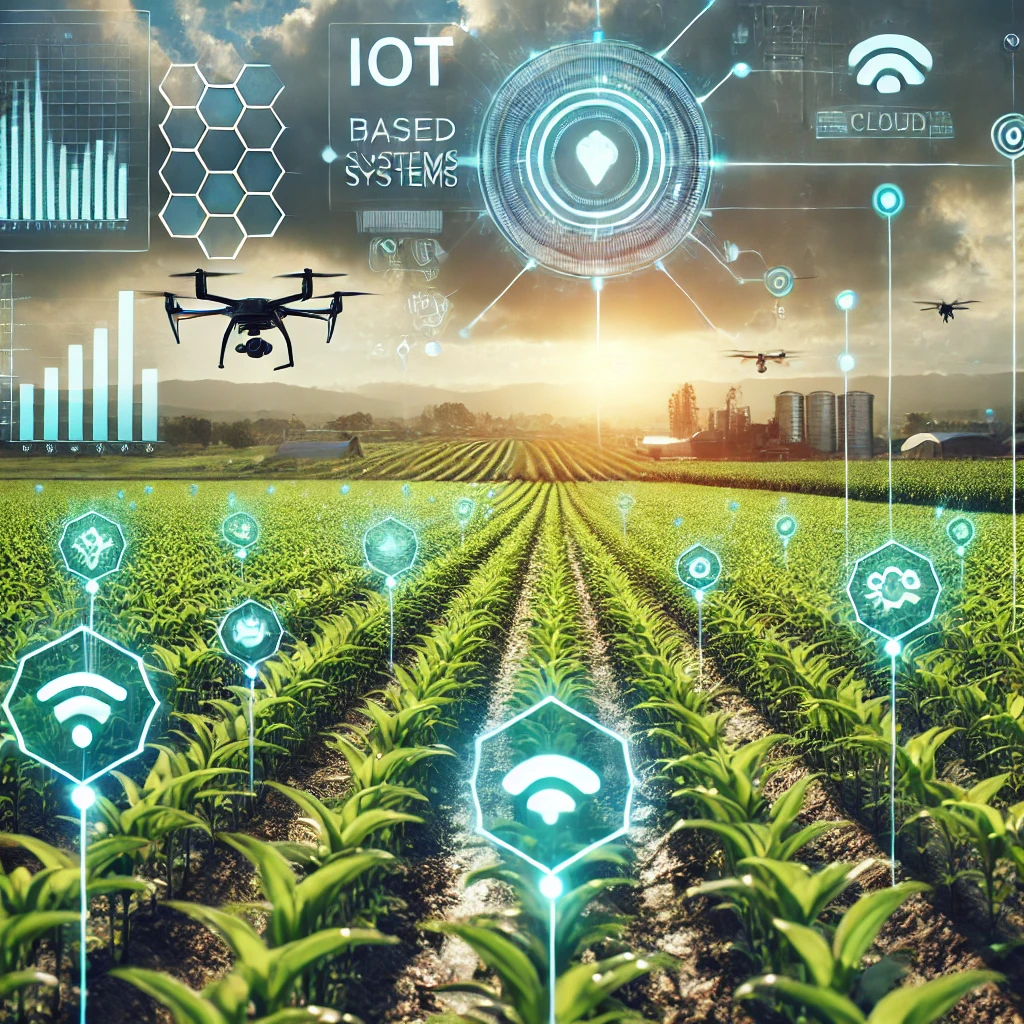The agriculture industry is on the brink of a technological revolution. With the increasing demand for sustainable and efficient farming practices, IoT-based monitoring systems have emerged as a game-changer. These systems provide real-time data and actionable insights that can significantly enhance crop management and overall farm productivity. Let’s explore how IoT-based monitoring systems are transforming agriculture.
What are IoT-based Monitoring Systems?
IoT (Internet of Things) refers to a network of interconnected devices that communicate and share data. In agriculture, IoT-based monitoring systems involve the use of sensors, devices, and software to monitor various aspects of farming, such as soil moisture, temperature, humidity, nutrient levels, and crop health. These systems collect and analyze data, providing farmers with valuable information to make informed decisions.
Key Components of IoT-based Monitoring Systems
- Sensors:
- Soil Sensors: Measure soil moisture, temperature, and nutrient levels.
- Weather Sensors: Monitor weather conditions like temperature, humidity, and rainfall.
- Crop Sensors: Track crop growth, health, and stress levels.
- Connectivity:
- Wireless Networks: Enable communication between sensors and central data systems.
- Internet Connectivity: Allows remote access to data and insights.
- Data Analytics:
- Data Collection: Gather data from various sensors in real-time.
- Data Analysis: Use algorithms and software to analyze data and provide actionable insights.
- User Interface:
- Dashboards: Visualize data through user-friendly interfaces accessible via computers or mobile devices.
- Alerts and Notifications: Send alerts to farmers for immediate actions required, such as irrigation or pest control.
Benefits of IoT-based Monitoring Systems in Agriculture
- Optimized Resource Usage:
- Water Management: Efficient irrigation practices based on real-time soil moisture data can save water and reduce costs.
- Fertilizer Application: Precise nutrient monitoring ensures optimal fertilizer use, minimizing waste and environmental impact.
- Enhanced Crop Yield and Quality:
- Timely Interventions: Real-time monitoring allows for timely interventions to address crop stress, pests, or diseases, improving crop health and yield.
- Data-driven Decisions: Access to accurate data helps farmers make informed decisions, leading to better crop management and productivity.
- Cost Savings:
- Reduced Labor Costs: Automated monitoring reduces the need for manual inspections and interventions.
- Lower Input Costs: Efficient resource usage lowers costs for water, fertilizers, and pesticides.
- Sustainability:
- Environmental Impact: Reduced usage of water, fertilizers, and pesticides contributes to sustainable farming practices.
- Resource Conservation: Optimized resource management helps in conserving natural resources.
Challenges and Considerations
While IoT-based monitoring systems offer numerous benefits, there are also challenges to consider:
- Initial Setup Costs:
- The installation of sensors, connectivity infrastructure, and data analytics platforms can be expensive.
- Technical Expertise:
- Farmers may require training and technical support to effectively use and maintain IoT systems.
- Data Privacy and Security:
- Ensuring the security of data collected from farms is crucial to protect against unauthorized access and cyber threats.
- Internet Connectivity:
- Reliable internet connectivity is essential for real-time data transmission, which can be a challenge in remote or rural areas.
Success Stories
Several farmers and agricultural enterprises have successfully implemented IoT-based monitoring systems, leading to significant improvements in productivity and sustainability. For example:
- Smart Irrigation: A vineyard in California used soil moisture sensors and automated irrigation systems to optimize water usage, resulting in a 30% reduction in water consumption and improved grape quality.
- Precision Farming: A rice farmer in India implemented IoT sensors to monitor soil nutrients and moisture levels, leading to a 20% increase in yield and reduced fertilizer costs.
Future of IoT in Agriculture
The future of IoT in agriculture looks promising. With advancements in technology, IoT systems will become more affordable, accessible, and sophisticated. Integration with AI and machine learning will further enhance data analysis capabilities, providing even deeper insights and predictions. As more farmers adopt IoT-based monitoring systems, we can expect a significant transformation in the agriculture industry, driving efficiency, sustainability, and productivity.
Conclusion
IoT-based monitoring systems are revolutionizing agriculture by providing real-time data and actionable insights. These systems optimize resource usage, enhance crop yield and quality, and contribute to sustainable farming practices. While there are challenges to overcome, the benefits far outweigh the drawbacks. As technology continues to advance, IoT will play an increasingly vital role in shaping the future of agriculture, helping farmers meet the growing demand for food in a sustainable and efficient manner.
By incorporating IoT-based monitoring systems, farmers can stay ahead of the curve, ensuring their practices are efficient, sustainable, and productive. Embrace the power of IoT and be a part of the agricultural revolution.

